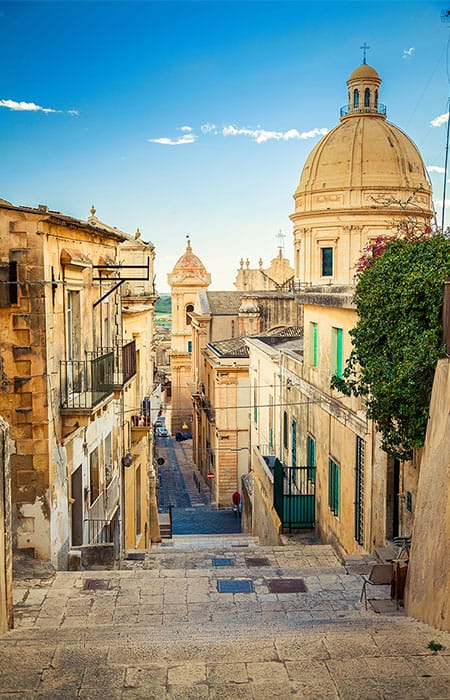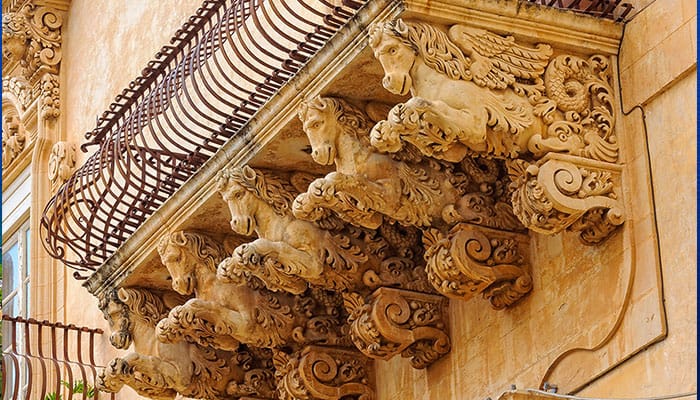
Noto, a UNESCO World Heritage Site, and now an essential part of any cultural tour of Sicily is only 35 minutes from the port of Pozzallo. Noto, known as il Capitale del barocco siciliano was all but forgotten until the catastrophic collapse of the Duomo in 1996, after years of neglect and a national and ultimately an international outcry.
Rosario Gagliardi, the leading Sicilian Baroque architect of his time designed the cathedral but delays in construction led to numerous modifications and what we see today is the design on completion of the building in 1776, under the supervision of Bernardo Labisi. The Duomo was reopened to the public in 2007.
Noto Antica, like the rest of surrounding region of South Western Sicily was devastated by the earthquake of 1693. Incidentally the cathedral of Mdina, here in Malta, was also damaged by the same earthquake. The new Noto was built on a plateau about 8 km to the south of the city because the town planners wanted to achieve perfect symmetry.
The town centre is built on a grid system, consists of one straight street, Corso Vittorio Emanuele, with three elegant piazzas.
Must see/do:
Porta Reale, the triumphal arch dedicated to the Spanish Bourbon monarchy, is at one end of the Corso.
Piazza ImmacolataJust down on the Corso from the Porta is Vincenzo Sinartra’s magnificent Church of San Francesco
Piazza MunicipioThe next piazza, The Piazza Municipio, about half way along, is the finest piazza in all of Sicily.
The Palazzo DucezioOn one side almost directly opposite the Duomo, gives the Piazza a most elegant touch. The Palazzo Ducezio is today the offices of the local council – arguably the finest local council offices anywhere in the world.
Piazza XVI MaggioThe third and last piazza at the opposite end of the Corso from the Porta Reale. Here we find the small but exquisite Teatro Comunale . Each and every building along the Corso is a breathtaking example of Sicilian Baroque at its very best.
The most flamboyant building of all however is on a side street just beyond the Duomo, Palazzo Villadorata in Via Nicolosi. This is a must. Any time of the day you are bound to see someone taking a photograph of the long balcony supported by an array of sculptured galloping horses, chubby cherubs and bearded Saracens.
The Infiorata di Noto takes place on the third weekend in May when Via Nicolosi is covered in a carpet of fresh flowers grown for the occasion, with local and now foreign artists exhibiting their talents.


Difficult to imagine in this day and age, but Noto was built specifically to house two different populations, the lower segment of the town, separated by steep stairways and side street from upper Noto, was reserved for the patricians with their elaborate palazzos, church dignitaries and high government officials.
Upper Noto on the other hand was the plebeian quarter. As luck would have it one of the finest buildings in Noto, Gagliardi’s church of Santissimo Crocefisso, with its magnificent façade, is in upper Noto.